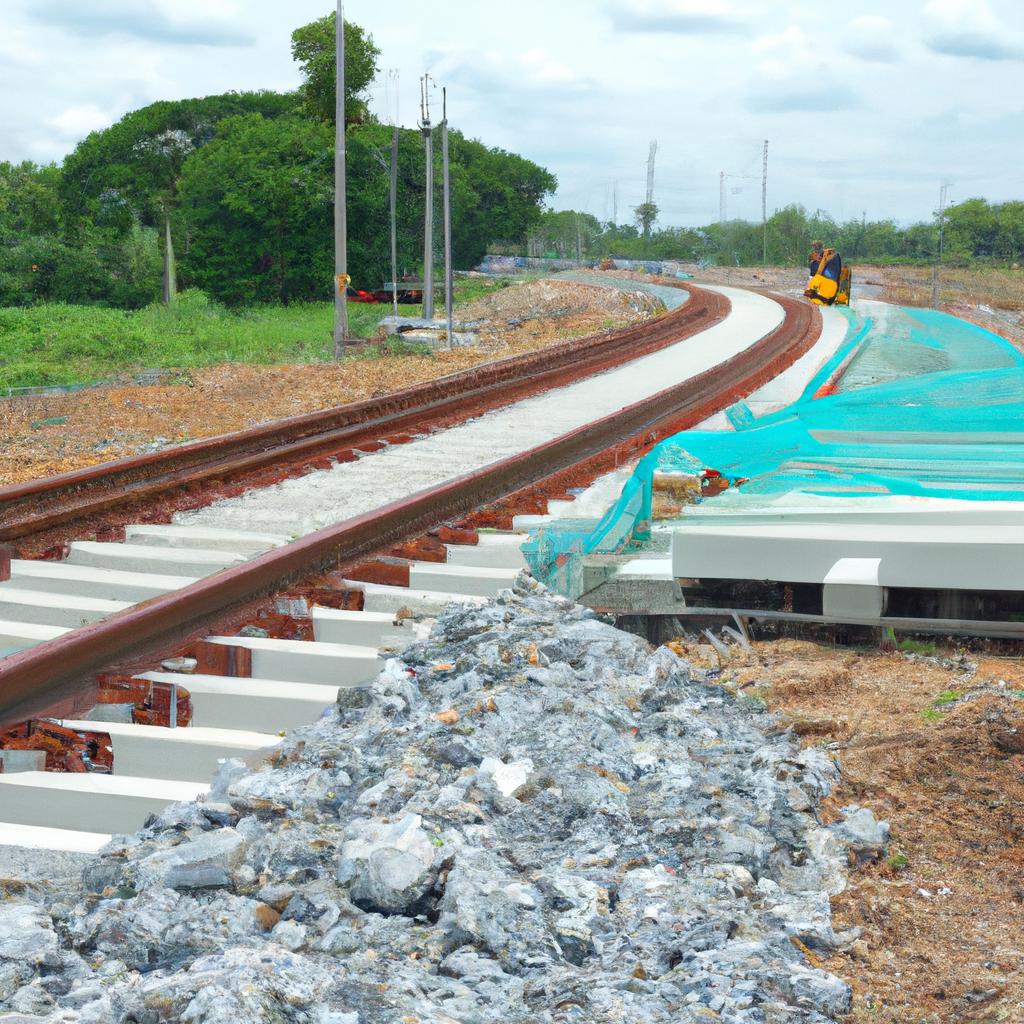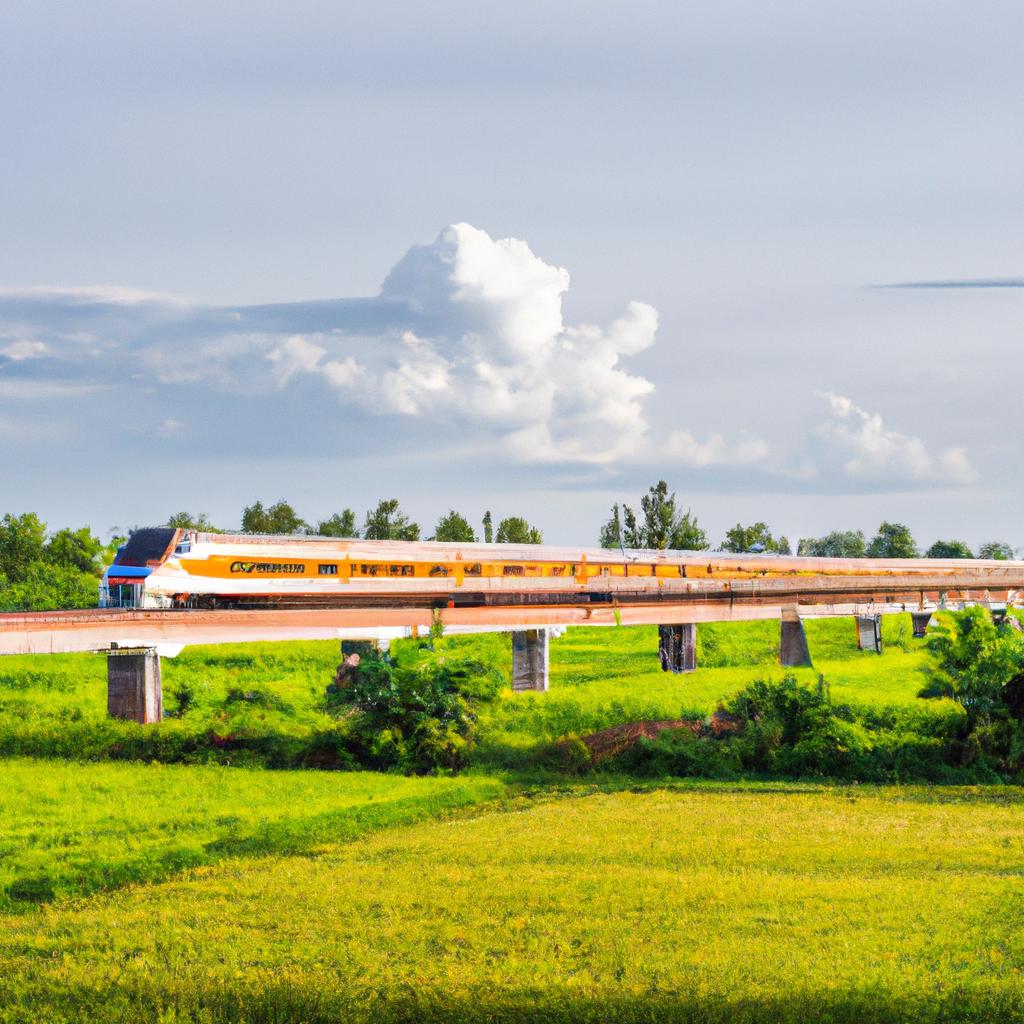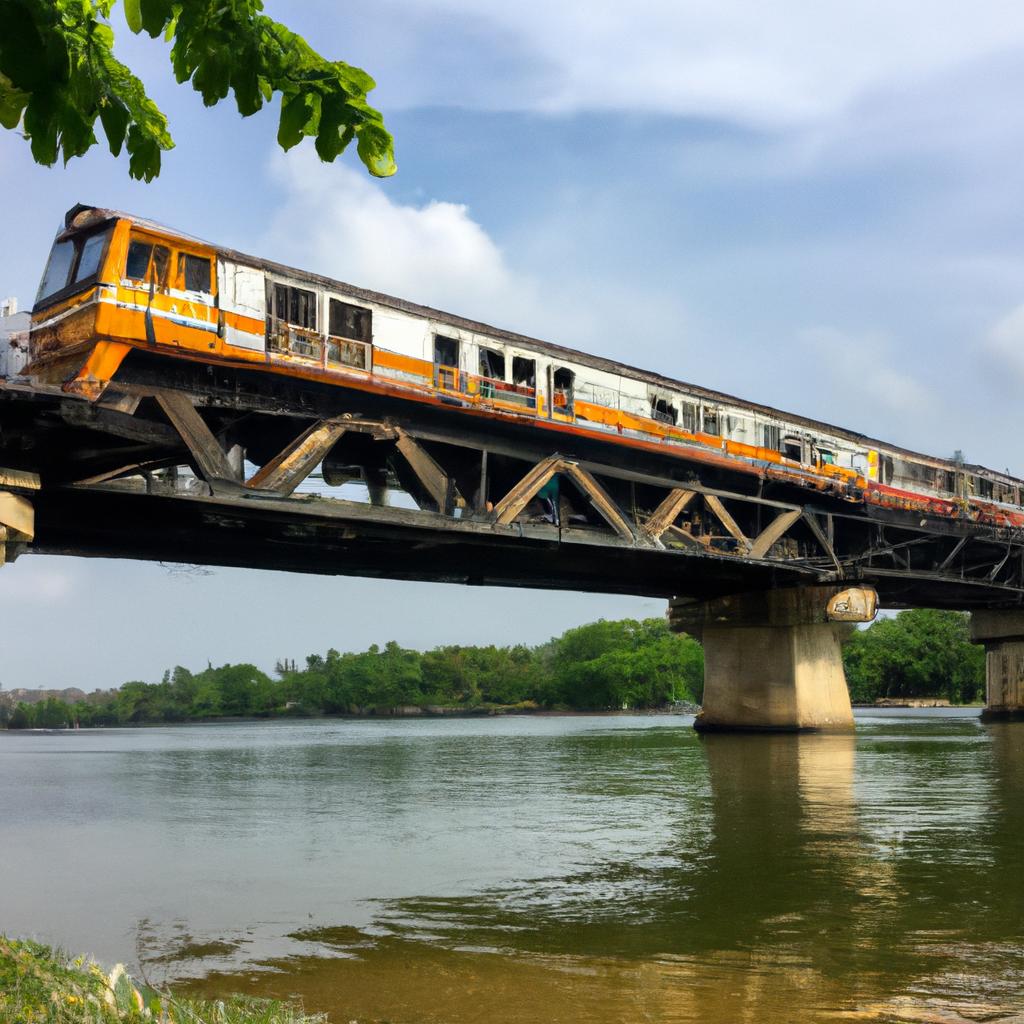Are you familiar with the Thailand Railroad Market? It’s not just an ordinary industry; it serves as a vital cog in Thailand’s economy. By connecting major cities and remote areas, the railway system fuels economic growth by efficiently transporting people and goods across the country.
The Thailand Railroad Market has a significant impact on the economy. It provides a faster and more cost-effective mode of transportation compared to other options, benefiting both individuals and businesses. Moreover, the railway sector generates employment opportunities, making it a driving force behind the country’s economic development.
This article aims to provide you with an overview of the Thailand Railroad Market. We’ll delve into its history, current state, market size, challenges, opportunities, and the competitive landscape. Join us on this exciting journey through the railroads of Thailand!
An Overview of the Thailand Railroad Market

A Historical Background of the Railroad Industry in Thailand
The roots of the Thai railway industry date back to 1890 when the first railway line connected Bangkok and Ayutthaya. This marked the beginning of a rapid expansion of the railway network, contributing significantly to the country’s economic development. Over the years, the railway system facilitated the transportation of goods and people across the nation.
The Current State of the Industry
In recent times, the Thailand Railroad Market has experienced remarkable transformations, with substantial investments in infrastructure and technology. The government has made the development of the railway industry a priority, implementing projects to modernize the network. This promising state of affairs includes ongoing initiatives aimed at enhancing the system’s efficiency and capacity.
Key Players in the Market
The Thailand Railroad Market is a competitive arena comprising various players. The primary operator of the railway network is the State Railway of Thailand (SRT). However, there are other significant contributors, including private companies and international operators such as China Railway Construction Corporation and Japan International Cooperation Agency.
This competition has spurred innovation, leading to the introduction of new technologies and services that enhance the overall customer experience. Stay tuned to discover more about the market’s size, growth, and the exciting possibilities it holds.
Market Size and Growth

Statistics on the Size of the Thailand Railroad Market
The Thailand Railroad Market makes a substantial contribution to the economy, boasting approximately 3,000 kilometers of railway tracks. According to the Office of Transport and Traffic Policy and Planning (OTP), there were 4,043 km of railway tracks in Thailand as of 2020. Out of these, the State Railway of Thailand (SRT) operates 1,952 km, while private companies manage the remaining 2,091 km.
With an average annual growth rate of 2.4% from 2015 to 2020, the railway industry has demonstrated consistent progress. The OTP projects a compound annual growth rate (CAGR) of 2.8% from 2020 to 2025. This positive trend owes itself to the increasing demand for goods transportation and the government’s plans to invest further in the sector.
Projections of Market Growth
The Thailand Railroad Market is set for significant expansion in the years to come. The government has allocated over 2 trillion baht to the railway industry over the next decade. This substantial investment will focus on upgrading existing railway lines, constructing new ones, and expanding the network nationwide.
Expectations are high that this investment will spur market growth, improving infrastructure and increasing the efficiency of the railway system. It will also create more job opportunities, driving economic growth throughout the country.
Factors Contributing to Market Growth
Several factors contribute to the growth of the Thailand Railroad Market. One critical factor is the increasing demand for goods transportation, particularly between Thailand and neighboring countries. The railway industry is also witnessing heightened competition due to private companies investing in and expanding their operations.
Government support and investment play a significant role in market growth. Policies aimed at promoting railway transportation and improving infrastructure, such as the Eastern Economic Corridor (EEC) project, have been implemented. The EEC project seeks to develop Thailand’s transportation infrastructure, including the railway system, to support the country’s economic growth.
The Competitive Landscape

The Thailand Railroad Market is a battleground of fierce competition, with numerous players vying for a share. This section will analyze the competitive landscape, focusing on key players and their market presence.
Analysis of the Competitive Landscape
The Thailand Railroad Market is a complex industry with multiple players. The dominant force in the market is the State Railway of Thailand (SRT), which controls the majority of the railway tracks nationwide. However, other private players, such as Bangkok Mass Transit System (BTS) and Sino-Thai Engineering and Construction (STEC), operate on specific routes, providing services such as high-speed trains and urban transit systems.
Key Competitors and Their Market Share
The State Railway of Thailand (SRT) holds the highest market share, exceeding 90%. Bangkok Mass Transit System (BTS) operates the Skytrain, an urban transit system connecting Bangkok’s central business district to its suburbs. Sino-Thai Engineering and Construction (STEC) focuses on railway construction and maintenance.
Strategies Employed by Competitors
To gain a competitive edge, key players in the Thailand Railroad Market employ various strategies. The State Railway of Thailand (SRT) concentrates on modernizing its existing infrastructure to deliver superior service. Bangkok Mass Transit System (BTS) expands its network to enhance connectivity for passengers. Sino-Thai Engineering and Construction (STEC) concentrates on railway construction projects to expand its business.
In conclusion, the Thailand Railroad Market is a competitive industry primarily dominated by the State Railway of Thailand (SRT). Nevertheless, private players like Bangkok Mass Transit System (BTS) and Sino-Thai Engineering and Construction (STEC) also play significant roles. These players employ different strategies, including infrastructure modernization, service expansion, and targeted projects.
Conclusion

To wrap it up, the Thailand Railroad Market plays a pivotal role in the country’s transportation sector, connecting people and goods across vast distances. Despite challenges like infrastructure and funding, there are ample opportunities for growth, thanks to government support and increased investment.
The railway industry is poised to be a major driver of Thailand’s economic growth. Focusing on its development will unlock its full potential. We hope this article has provided you with valuable insights into the Thailand Railroad Market and its future prospects.
If you want to stay updated on the latest news and developments in the Thailand Railroad Market, be sure to follow our website TooLacks. Thank you for joining us on this exciting journey through Thailand’s railways!



